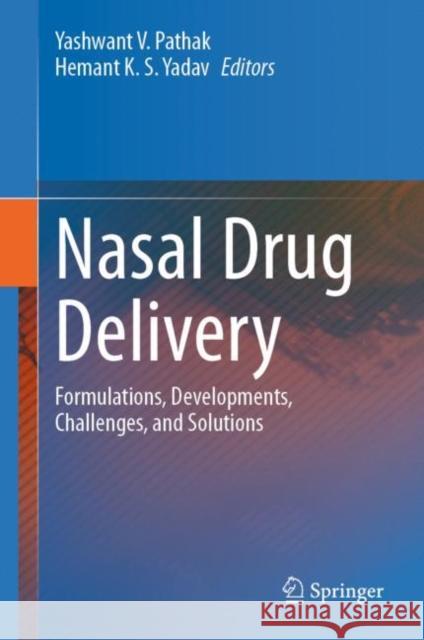Nasal Drug Delivery: Formulations, Developments, Challenges, and Solutions » książka
Nasal Drug Delivery: Formulations, Developments, Challenges, and Solutions
ISBN-13: 9783031231117 / Angielski / Twarda / 2023 / 486 str.
Nasal Drug Delivery: Formulations, Developments, Challenges, and Solutions
ISBN-13: 9783031231117 / Angielski / Twarda / 2023 / 486 str.
(netto: 653,27 VAT: 5%)
Najniższa cena z 30 dni: 655,41
ok. 22 dni roboczych
Bez gwarancji dostawy przed świętami
Darmowa dostawa!
This book addresses the recent trends and clinical research being reported in last 5 to 10 years in the field of nasal drug delivery systems. In recent years, interest in using nasal passage as drug absorption site has received increased attention from formulation scientists. Nasal passages, even though a small surface area of the body as compared to other absorption passage such as Gastrointestinal tract or skin, show significant possibility for drug absorption at a quicker rate. There is also a possibility of delivering drugs to the brain using this passage and targeting drugs through the nasal passage. The book has 19 chapters addressing various aspects of nasal drug delivery systems such as an overview of anatomy and physiology of the nasal passage from a drug delivery point of view to global market opportunities for nasal drug delivery. In between, it addresses various aspects of nasal drug delivery. There are very few titles exclusively dedicated to nasal drug delivery, covering the formulation and developmental aspects, and addressing the challenges and solutions. The primary audiences for the book are graduate students in field of medicine, pharmacy and also various researchers who are working in the area of nasal drug delivery in addition to students who are specializing in field of medicine in ENT. This book provides comprehensive information on all the aspects related to the nasal drug delivery of various drug molecules.
This book addresses the recent trends and clinical research being reported in last 5 to 10 years in the field of nasal drug delivery systems. In recent years, interest in using nasal passage as drug absorption site has received increased attention from formulation scientists. Nasal passages, even though a small surface area of the body as compared to other absorption passage such as Gastrointestinal tract or skin, show significant possibility for drug absorption at a quicker rate. There is also a possibility of delivering drugs to the brain using this passage and targeting drugs through the nasal passage. The book has 19 chapters addressing various aspects of nasal drug delivery systems such as an overview of anatomy and physiology of the nasal passage from a drug delivery point of view to global market opportunities for nasal drug delivery. In between, it addresses various aspects of nasal drug delivery. There are very few titles exclusively dedicated to nasal drug delivery, covering the formulation and developmental aspects, and addressing the challenges and solutions. The primary audiences for the book are graduate students in field of medicine, pharmacy and also various researchers who are working in the area of nasal drug delivery in addition to students who are specializing in field of medicine in ENT. This book provides comprehensive information on all the aspects related to the nasal drug delivery of various drug molecules.











